
Bruce Bower has written about the behavioral sciences since 1984. He often writes about psychology, anthropology, archaeology and mental health issues. Bruce has a master's degree in psychology from Pepperdine University and a master's degree in journalism from the University of Missouri. Following an internship at Science News in 1981, he worked as a reporter at Psychiatric News, a publication of the American Psychiatric Association, until joining Science News as a staff writer. In 1996, the American Psychological Association appointed Bruce a Science Writer Fellow, with a grant to visit psychological scientists of his own choosing. Early stints as an aide in a day school for children and teenagers with severe psychological problems and as a counselor in a drug diversion center provided Bruce with a surprisingly good background for a career in science journalism.

Trustworthy journalism comes at a price.
Scientists and journalists share a core belief in questioning, observing and verifying to reach the truth. Science News reports on crucial research and discovery across science disciplines. We need your financial support to make it happen – every contribution makes a difference.
All Stories by Bruce Bower
-
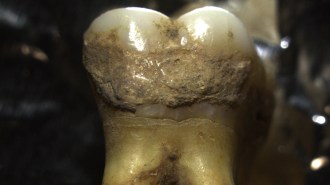 Archaeology
ArchaeologyA taste for wild cereal sowed farming’s spread in ancient Europe
Balkan groups collected and ate wild cereal grains several millennia before domesticated cereals reached Europe.
-
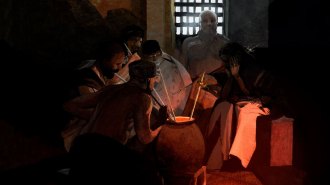 Archaeology
ArchaeologyGold and silver tubes in a Russian museum are the oldest known drinking straws
Long metal tubes enabled communal beer drinking more than 5,000 years ago, scientists say.
-
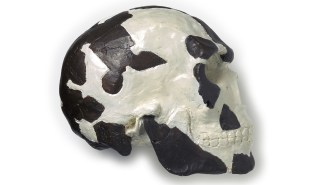 Anthropology
AnthropologyHomo sapiens bones in East Africa are at least 36,000 years older than once thought
Analyses of remnants of a volcanic blast push the age of East Africa’s oldest known H. sapiens fossils at Ethiopia’s Omo site to 233,000 years or more.
-
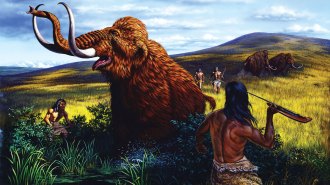 Archaeology
ArchaeologyClovis hunters’ reputation as mammoth killers takes a hit
Early Americans’ stone points were best suited to butchering the huge beasts’ carcasses, scientists contend.
-
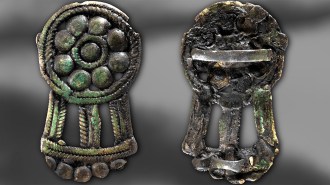 Archaeology
ArchaeologyArctic hunter-gatherers were advanced ironworkers more than 2,000 years ago
Swedish excavations uncover furnaces and fire pits from a big metal operation run by a small-scale society, a new study finds.
-
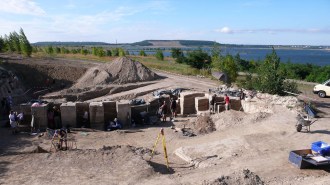 Archaeology
ArchaeologyNeandertals were the first hominids to turn forest into grassland 125,000 years ago
Neandertals’ campfires, hunting and other activities altered the land over 2,000 years, making them the first known hominids to impact their environs.
-
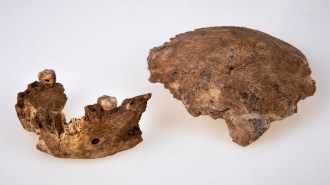 Anthropology
Anthropology2021 research reinforced that mating across groups drove human evolution
Fossils and DNA point to mixing and mingling among Homo groups across vast areas.
-
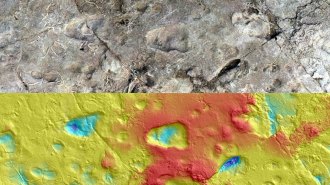 Anthropology
AnthropologyAncient footprints suggest a mysterious hominid lived alongside Lucy’s kind
A previously unknown hominid species may have left its marks in muddy ash about 3.66 million years ago in what is now East Africa.
-
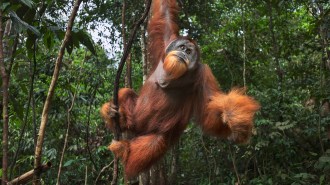 Anthropology
AnthropologyAncient giant orangutans evolved smaller bodies surprisingly slowly
Fossil teeth from Chinese caves indicate that a single, ancient orangutan species gradually trimmed down over nearly 2 million years.
-
 Anthropology
Anthropology‘The Dawn of Everything’ rewrites 40,000 years of human history
A new book recasts human social evolution as multiple experiments with freedom and domination that started in the Stone Age.
-
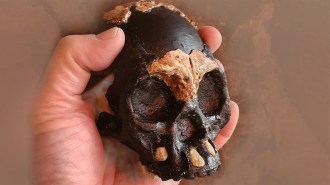 Anthropology
AnthropologyA child’s partial skull adds to the mystery of how Homo naledi treated the dead
The isolated discovery of a Homo naledi child’s skull fragments and teeth plays into idea that small-brained species ritually placed the dead in caves.
-
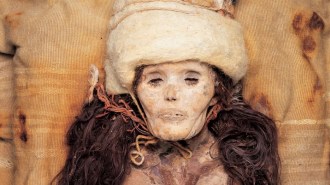 Genetics
GeneticsDNA from mysterious Asian mummies reveals their surprising ancestry
Ancient DNA indicates that an enigmatic Bronze Age group consisted of genetic, but not cultural, loners.